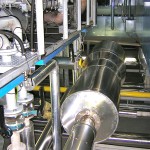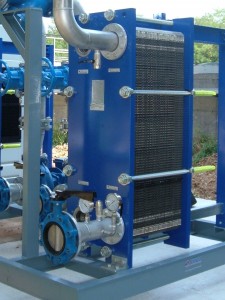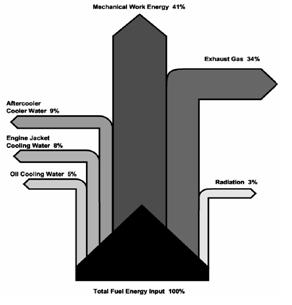Heat recovery on an engine refers to the capture and reutilization of heat energy which is normally wasted to radiators. This process,increasingly common today, improves total system efficiency and return on investment. New plants designed for this purposes are usually called cogeneration plants.
Reciprocating engines energy coming from fuel is converted to:
• 30-40% mechanical power
• 20-40% rejected to the jacket water
• 30-40% rejected to exhaust
• 5-7% radiated to the environment
these data depends from kind of engine and manufacturer.
The heat rejected by the jacket water can be totally recovered.
The 50-70% of the exhaust rejected energy, in economically recoverable, more then this value is not achievable, due to problem of low temperature of exhaust and corrosion resistance of heat exchangers.
Total heat recovery results in approximately 75-80% efficiency.
Heat recovery design best suited for any installation depends on many considerations, both technical and economic.
We need to keep in mind that the primary function of any design is to cool the engine. The engine must be cooled even when heat demand is low, but power is still required.
Usually energy is recovered producing hot water or superheated water, sometimes producing steam.
To achieve recovery on engine the best solutions are:
• Plate heat exchangers for water jacket recovery
• Special shell and tube heat exchangers for exhaust recovery.
 Heat Balance
Heat Balance
The typical heat balance for an engine is shown in the figure below.


